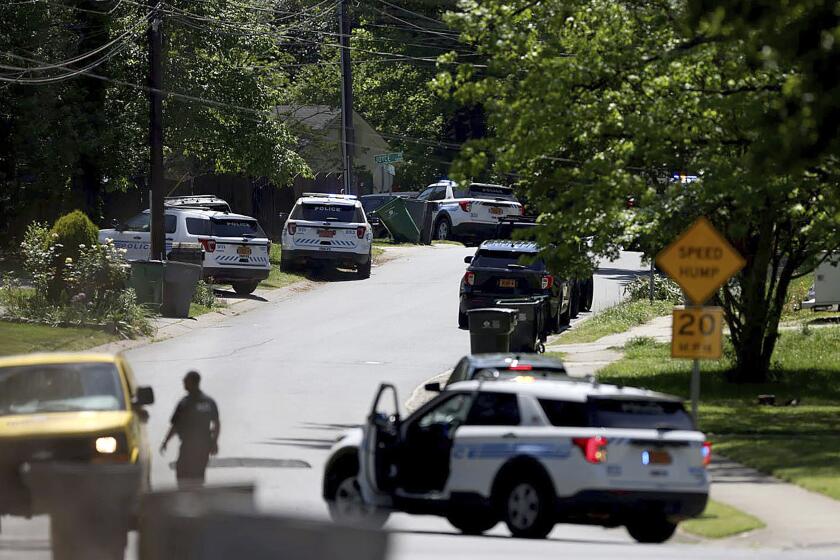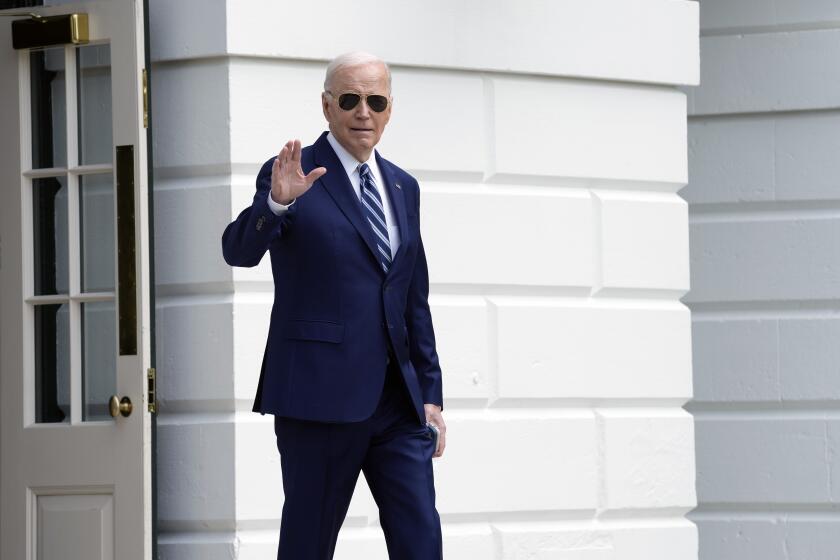New energy behind nuclear power
Global warming and rocketing oil prices are making nuclear power fashionable, drawing a once-demonized industry out of the shadows of the Chernobyl disaster as a potential model of clean energy.
Britain is the latest nation to announce support for the construction of new nuclear power plants. Nuclear plants produces about 20% of Britain’s electricity, but all but one are expected to close by 2023.
However, some countries hopping on the nuclear bandwagon have abysmal industrial safety records and are seen as burdened by corruption.
China has 11 nuclear plants and plans to bring at least 30 more online by 2020. And a Massachusetts Institute of Technology report projects that it may need to add as many as 200 reactors by 2050.
Of the more than 100 nuclear reactors being built, planned or on order, about half are in China, India and other developing nations. Argentina, Brazil and South Africa plan to expand existing programs; and Vietnam, Thailand, Egypt and Turkey are among the countries that are considering building their first reactors.
The concerns are hardly limited to developing countries. Japan’s nuclear power industry has yet to recover from revelations five years ago of dozens of cases of false reporting on inspections for cracks in reactors.
The Swedish operators of a German reactor came under fire last summer for delays in informing the public about a fire at the plant. And a potentially disastrous partial breakdown of a Bulgarian nuclear plant’s emergency shutdown mechanism in 2006 went unreported for two months until whistle-blowers made it public.
Nuclear transparency will be an even greater problem for countries such as China that tightly control information. Those who mistrust the current nuclear revival are still haunted by the 1986 meltdown of the Chernobyl reactor and the Soviet Union’s attempts to hide the full extent of the catastrophe.
The revival, the International Atomic Energy Agency estimates, means nearly a doubling of nuclear energy within two decades to 691 gigawatts, or 13.3% of electricity generated.
“We are facing a nuclear renaissance,” said Anne Lauvergeon, chief executive of the French nuclear energy firm Areva. “Nuclear’s not the devil anymore. The devil is coal.”
Philippe Jamet, the IAEA’s director of nuclear installation safety, described the industry’s record as “second to none.” Still, he said, countries new to or still learning about nuclear power “have to move down the learning curve, and they will learn from [their] mistakes.”
Vienna-based IAEA, a United Nations body, was set up in 1957 in large part to limit such trial and error, providing quality controls and expertise to countries with nuclear programs and overseeing pacts binding them to high safety standards.
But the agency is already stretched with monitoring Iran and North Korea over their suspected nuclear arms programs, and IAEA chief Mohamed ElBaradei said his organization could not be the main guarantor of safety. The primary responsibility, he said, rests with the operators of nuclear facilities and their governments.
Developing nations insist that they are ready for the challenge. But worries persist that bad habits of the past could reflect on operational safety.
In China, for instance, hundreds die annually in the world’s most dangerous coal mines and thousands more in fires, explosions and other accidents often blamed on insufficient safety equipment and workers ignoring safety rules.
A Finnish study published in 2005 said India’s annual industrial fatality rate was 11.4 people per 100,000 workers and the accident rate 8,700 per 100,000.
Overall, Asian nations excluding China and India have an average industrial accident fatality rate of 21.5 per 100,000 and an accident rate of more than 16,000 per 100,000 workers, according to the report by the Tampere University of Technology in Finland. The study lists a fatality rate of 5.2 people per 100,000 for the U.S. and 3 per 100,000 for France.
Nuclear nations are obligated to report all incidents to the IAEA. But the study said most Asian governments vastly underreport industrial accidents to the U.N.’s International Labor Organization -- fewer than 1% in China’s case.
Separately, China and India shared 70th place in the 2006 Corruption Perceptions index, published by the Transparency International think tank. It ranked 163 nations, with the least corrupt first. Vietnam occupied the 111th spot, and Indonesia -- which, like Vietnam, wants to build a nuclear reactor -- came in 130th.
“Are there special concerns about the developing world? The answer is definitely yes,” said Carl Thayer, a Southeast Asia expert in Australia.
Corrupt officials in licensing and supervisory agencies in the region could undermine the best of IAEA guidelines and oversight, Thayer said.
“There could be a dropping of standards, and that affects all aspects of the nuclear industry, from buying the material to processing applications to building and running the plant.”
Permanent storage of radioactive waste -- which can remain toxic for tens of thousands of years -- is another major problem, as is shutting unsafe plants.
In China, permanent dump sites are not expected to be operational before 2040, according to the U.S. Department of Energy. So for now, China, like India, stores the waste in temporary sites, usually close to reactors, where it is more vulnerable to theft and poses a greater environmental danger.
Nuclear proponents say new generations of reactors now on the drawing board come with better fail-safe mechanisms and fewer moving parts. But even some of them have doubts about creating the foolproof reactor. IAEA official Hans-Holger Rogner said he was “suspicious when people say the next generation will be safer than the one we have.”
--
(BEGIN TEXT OF INFOBOX)
Waste strategies
Countries around the world are starting, expanding or reviving nuclear power programs. Here’s a look at how various nations handle the radioactive waste:
United States
The country with the most nuclear reactors, more than 120 spread out over 39 states, has no central system for dealing with waste. Plans for a long-term repository at Yucca Mountain in Nevada have been stalled for 25 years. For now, waste is stored in dry casks and cooling pools at reactor sites. The U.S. government shuns waste reprocessing because of risks it could lead to nuclear weapons proliferation. A push by the Bush administration for a new reprocessing method is likely to stall pending November elections.
France
France, more dependent on atomic energy than any country, recycles most of its nuclear fuel, and fuel from several other countries as well. French researchers are conducting experiments in an underground lab beneath Champagne country toward building a long-term storage facility. Meanwhile, it “vitrifies” its deadliest waste, turning it into glass to make it more stable and stores it in shallow underground canisters.
Russia
In Russia, home of the world’s largest nuclear waste site, reprocessing is common. International environmental groups complain of poor safety records and oversight at reprocessing plants. Greenpeace has accused Western European countries of secretly and illicitly shipping nuclear waste to Russia over several years.
Finland
Finland may become the first country to build a deep earth repository. The government has approved a long-term storage site, though it is not expected to be operational until after the country finishes building the world’s first “third-generation” reactor, expected in 2011.
Taiwan
Taiwan, which has three plants and is building a fourth, sought to build long-term waste sites in North Korea and the Marshall Islands but was blocked by protests. Taiwan has stored 100,000 barrels of nuclear waste on a tiny island but protests from an aboriginal group are forcing it to move the waste to another site, as yet unchosen, by 2013.
Source: Associated Press
More to Read
Start your day right
Sign up for Essential California for news, features and recommendations from the L.A. Times and beyond in your inbox six days a week.
You may occasionally receive promotional content from the Los Angeles Times.






